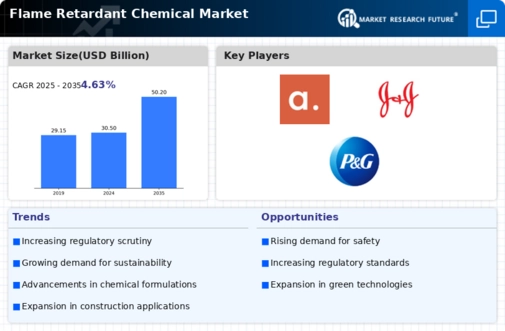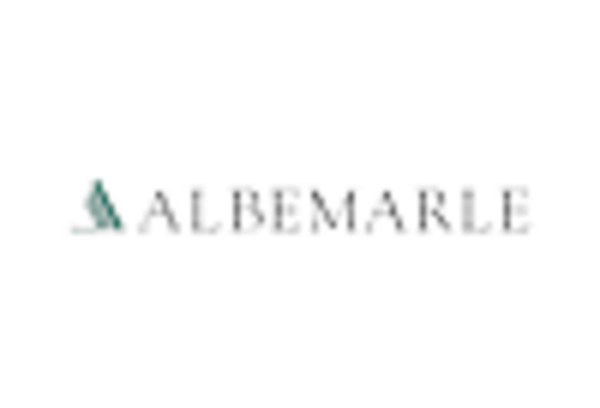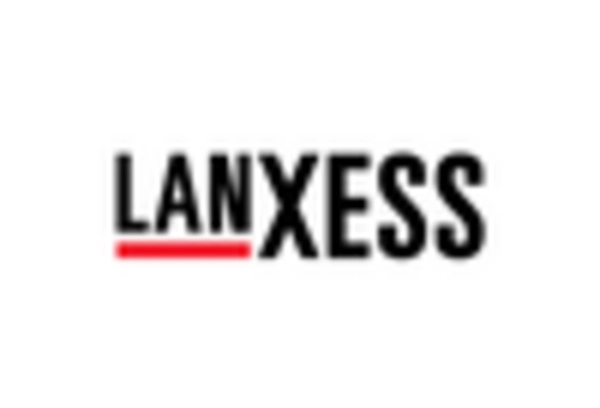The Flame Retardant Chemical Market is currently characterized by a dynamic competitive landscape, driven by increasing regulatory pressures and a growing emphasis on safety standards across various industries. Key players such as BASF SE (DE), Huntsman Corporation (US), and Albemarle Corporation (US) are strategically positioning themselves through innovation and sustainability initiatives. For instance, BASF SE (DE) has been focusing on developing bio-based flame retardants, which aligns with the rising demand for environmentally friendly solutions. Meanwhile, Huntsman Corporation (US) has been enhancing its product portfolio through strategic acquisitions, thereby expanding its market reach and technological capabilities. Collectively, these strategies not only enhance their competitive edge but also contribute to shaping a market that increasingly prioritizes safety and sustainability.
In terms of business tactics, companies are localizing manufacturing to reduce lead times and optimize supply chains, which is particularly crucial in a market that is moderately fragmented. The competitive structure allows for both established players and emerging companies to coexist, with larger firms leveraging their resources to innovate while smaller entities often focus on niche markets. This duality creates a vibrant ecosystem where collaboration and competition coexist, influencing pricing strategies and product offerings.
In August 2025, Albemarle Corporation (US) announced a partnership with a leading technology firm to develop advanced flame retardant solutions that utilize artificial intelligence for enhanced performance. This collaboration is significant as it not only positions Albemarle at the forefront of technological innovation but also addresses the growing demand for smarter, more efficient flame retardant products. The integration of AI into product development could potentially streamline processes and improve product efficacy, thereby setting a new standard in the industry.
Similarly, in September 2025, Huntsman Corporation (US) launched a new line of sustainable flame retardants derived from renewable resources. This initiative reflects a broader trend towards sustainability within the market, as consumers and regulatory bodies increasingly favor products that minimize environmental impact. By prioritizing sustainability, Huntsman not only meets current market demands but also anticipates future regulatory changes, thereby securing its competitive position.
Moreover, in July 2025, Solvay SA (BE) expanded its production capacity for flame retardants in Asia, aiming to cater to the growing demand in the region. This strategic move underscores the importance of regional expansion in a globalized market, allowing Solvay to enhance its supply chain efficiency and respond more effectively to local market needs. Such expansions are indicative of a trend where companies are not only focusing on product innovation but also on geographical diversification to mitigate risks and capitalize on emerging markets.
As of October 2025, the competitive trends within the Flame Retardant Chemical Market are increasingly defined by digitalization, sustainability, and the integration of advanced technologies. Strategic alliances are becoming more prevalent, as companies recognize the value of collaboration in driving innovation and enhancing product offerings. Looking ahead, it appears that competitive differentiation will increasingly hinge on factors such as technological advancement, sustainability initiatives, and supply chain reliability, rather than solely on price. This shift suggests a transformative phase in the market, where innovation and strategic partnerships will play pivotal roles in shaping future competition.


















Leave a Comment